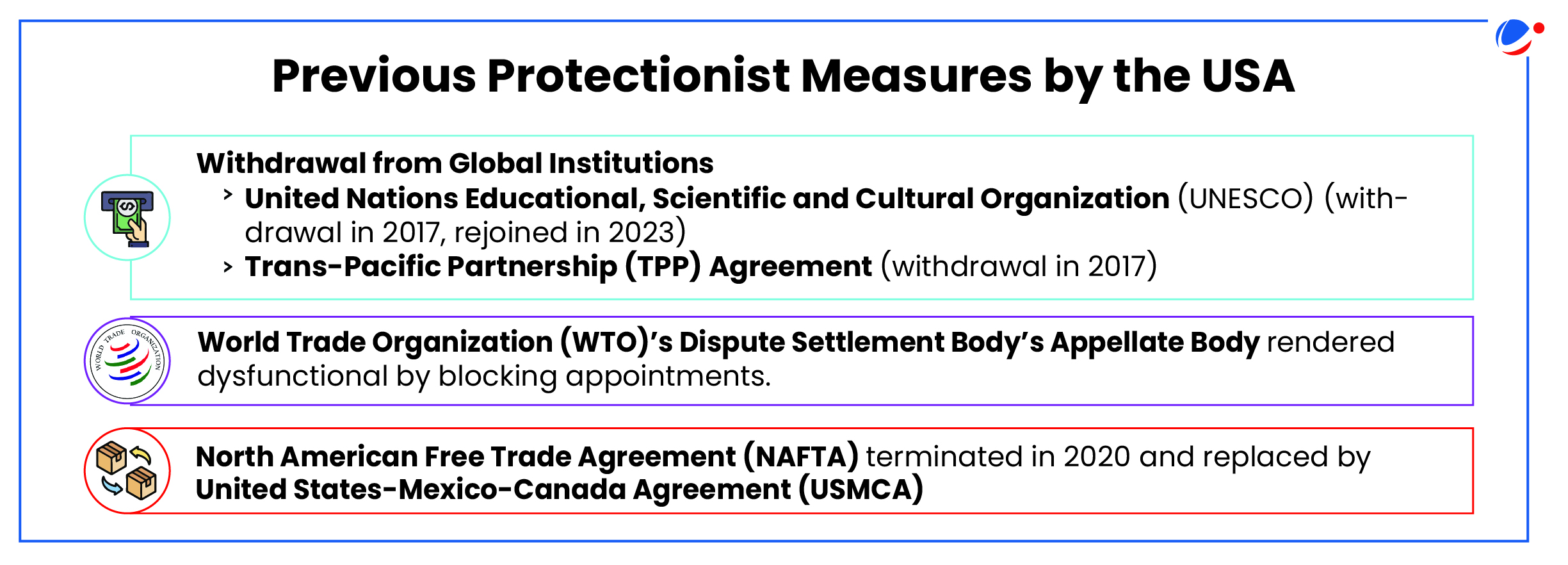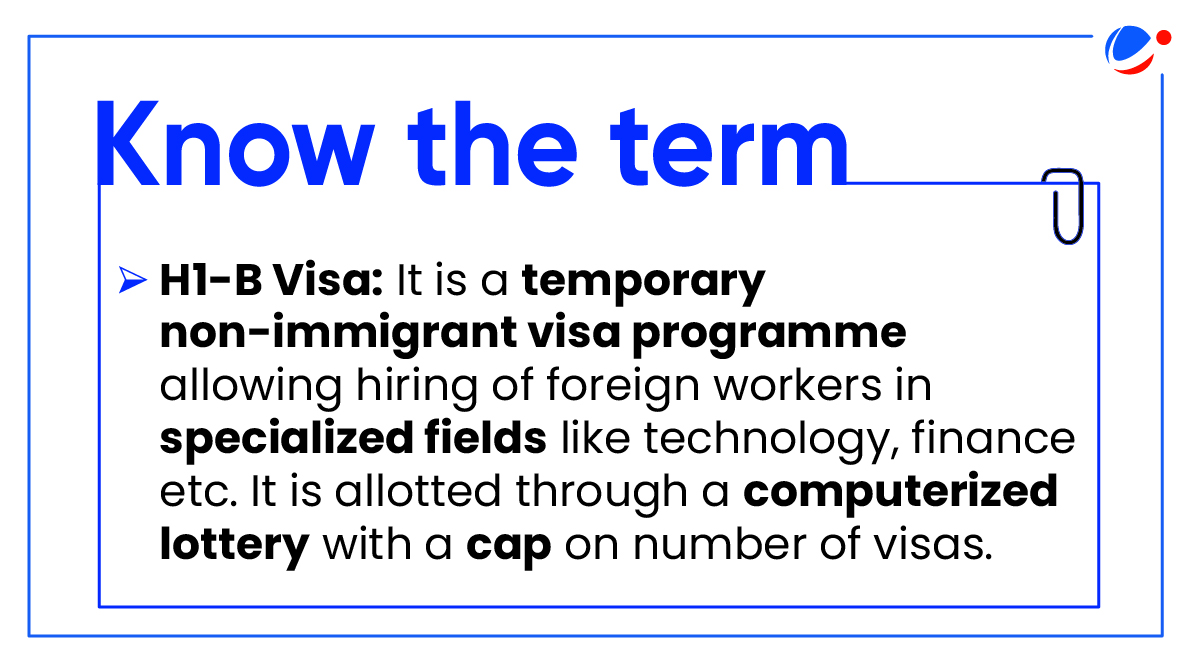Why in the news?
The USA, upholding its 'America First Policy,' has decided to exit from key global institutions like the World Health Organization (WHO), Paris agreement and the International Criminal Court (ICC).
More on the News
- USA had earlier exited Paris Agreement in 2017, but rejoined in 2021 and initiated process of withdrawal from WHO in 2020, reversed in 2021.
- USA is also engaged in a tariff war and has threatened to impose high tariffs on imports from trade surplus countries to reduce trade deficit of the USA.
- In 2023, the US trade deficit was at $1.05 trillion, with 4 countries (China, Mexico, Canada and EU) accounting for almost 80% of the trade deficit.
- These protectionist measures are being promoted to benefit American economy, upholding the idea of economic nationalism,

About Protectionism
|
Potential Impact of these Measures
Impact on Multilateralism/ Multilateral Institutions
- Weakening of Global international order: USA's 'sovereigntist view of international law' accelerates the weakening of the normative authority of multilateral institutions.
- 'Sovereigntist view of international law' assumes that multilateral treaties restrict a countries sovereign authority.
- Threat to global research: US has ceased negotiations on the WHO Pandemic Agreement and the amendments to the International Health Regulations.
- This risks success of many critical global research programmes for diseases and vaccine development as well as excludes the US from global information databases on diseases.
- Funding: USA is the highest contributor to funding various global institutions, impacting developmental and emergency works.
- E.g., U.S. has historically been the single largest contributor to WHO with total contributions being 15.6% WHO's total revenue in the 2022-2023.
- Environmental impact: US International Climate Finance Plan, established to channel funds through multilateral and bilateral institutions to help developing countries' climate challenges has been scrapped.
- This is against the principle of Common but Differentiated Responsibilities (CBDR).
- Global Trade and Supply Chains: USA's America First Trade Policy with the use of tariffs and potential import restrictions disrupts global supply chains, increases uncertainty in trade flows, impacts investor confidence and potentially disregards WTO rules.
- Global South: The Global South, with lack of adequate resources, rely on multilateral institutions to ensure fairness and justice.
- US Agency for International Development (USAID) funded climate-resilient agriculture projects in Tanzania impacted due to fund cuts, impacting yield productivity.
Impact on India-US cooperation
Positive
- Trade promotion: India can be seen as alternative manufacturing destination amidst the US-China trade tensions. E.g. IT services, Electronics and pharmaceuticals.
- US Department of Commerce's Bureau of Industry and Security removed 3 Indian organisations from its Entity List (list of organizations subject to export restrictions and licensing requirements)
- Indo-Pacific: Based on the "Pivot to Asia" strategy, the USA has promoted strategic partnership with India in the Indo-Pacific region intended to counter China's geopolitical influence.
- E.g. QUAD, India Middle East Economic Corridor (IMEC), Indo-Pacific Economic Framework (IPEF) etc.
- Technology: Knowledge sharing and technology transfer through initiatives like US-India Initiative on Critical and Emerging Technology (iCET) and civil nuclear energy partnership.

Negative
- Trade competition: Indian exporters may face heightened competition in third markets where Chinese goods are diverted and redirected due to US tariffs.
- E.g. Indian textile exporters competing with Chinese goods in Southeast Asia.
- Tariffs on Indian Trade: USA has criticized India's trade policies, highlighting high tariffs on imports (e.g. Harley Davidson motorcycles) and may impose high tariffs on Indian exports (E.g. steel, automobiles etc.).
- US has a trade deficit of $45.7 billion with India.
- Immigration Policies: Tighter immigration policies like H1-B visa restrictions, banning birthright citizenship etc. may impact Indian tech workers and diaspora in the USA.
- India supplies ~70% of H1-B workers annually.
- USA's push for domestic production: Policy of 'Buy American' may impact Indian exports due to restricted market access and impact Make in India initiative, PLI Scheme etc.
Conclusion
In the context of changing global economic landscape, India's ability to navigate the complexities of trade wars, financial realignments, and emerging blocs will be pivotal. Indian policies should focus on strengthening bilateral trade agreements, diversifying export markets, and championing reforms in multilateral institutions. India's geoeconomic success will depend on its ability to balance collaboration with strategic autonomy in a rapidly changing global landscape.



